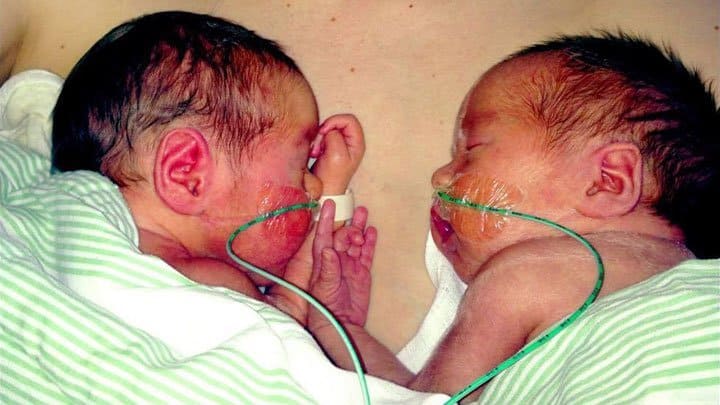TTTS stages: Staging system
A staging system proposed by fetal surgeon Dr. Ruben Quintero is commonly used to classify the severity of Twin to Twin Transfusion Syndrome (TTTS). He proposed five TTTS stages that are now used worldwide. The five TTTS stages are based on ultrasound findings, which have made assessment much clearer.
Dr. Ruben Quintero describes in his research how he noticed an apparent sequence of events in progressive TTTS. He grades the severity of TTTS by the characteristics of amniotic fluid volume, bladder filling and multiple features of cardiovascular function, in five stages.
Be aware though that one of the weaknesses of the staging system is that it creates the impression that the natural history of TTTS follows an orderly progression over time. According to the National Organization for Rare Disorders in the U.S., clinical experience has shown that this is not the case. Progression of the disease processes are highly variable.
The 5 TTTS stages
Stage 1: There’s an imbalance of amniotic fluid.* A small amount is found around the donor twin – there’s a maximum vertical pocket of less than 2 cm. A large amount is found around the recipient twin. The maximum vertical pocket is greater than 8 cm. There’s sometimes a size discordance observed. However, most cases of TTTS do not have this sign. Size discordance is not considered to be strongly associated with TTTS. The bladder in the donor twin is still visible. When a Doppler ultrasound is conducted, the findings are not critically abnormal. A Doppler ultrasound is a noninvasive test that can be used to estimate blood flow through blood vessels in the placenta and umbilical cords.
* Low amniotic fluid is termed oligohydramnios, while a high level of amniotic fluid is called polyhydramnios. Please note that both these conditions must be present for the diagnosis of TTTS.
Stage 2: In addition to the findings in stage 1, the bladder of the donor twin is no longer visible.
Stage 3: A Doppler ultrasound shows that there’s abnormal blood flow through blood vessels in the placenta and the umbilical cords of the babies.
Stage 4: In addition to all of the above findings, the recipient twin is swelling and appears to be experiencing heart failure.
Stage 5: In addition to all of the above findings, one (or both) of the twins has died. It can happen to either twin.
TTTS can occur at different stages. How the disease is treated depends on what stage it has progressed to when it’s discovered. For Stage 1 cases, observation may be all that’s necessary. For Stage 2 or higher cases, fetal laser surgery may be the best option. Read more about the different possibilities of treatment.















Newly diagnosed Stage One cases need Sono updates no less often than every 72 Hours for at least 2 weeks. Inpatient Observation for 4 to 7 days, with Daily Comprehensive Sono, is not excessive, & often proves Prudent for the newly diagnosed cases. Note that Stable Stage One cases are fairly Rare.
Thanks again Kate.
Hi Kate,
You’ve got an Obsolete Datum in your description of Quintero Stage One, that Should read “There sometimes is a size discordancy observed. However, most cases of TTTS do Not have this Sign. Size Discordancy is not considered to be Strongly Associated with TTTS, & the diagnosis of it is based on Fluidic Discordancy Only…”
Thank you again for this Top Quality & most Informative site.
Your efforts are deeply appreciated.
Michael Ray Overby,
Lay Counselor
MoDi Twins & Pregnancy on Facebook.
Hi Michael,
Thank you for your message. I actually had a mfm specialist/fetal surgeon read through this article before publishing it, but it must have escaped her notice. I’ll edit the article. Thanks for drawing my attention to this.